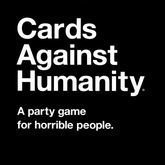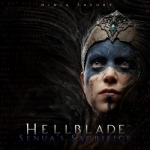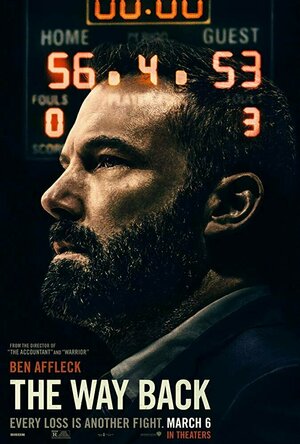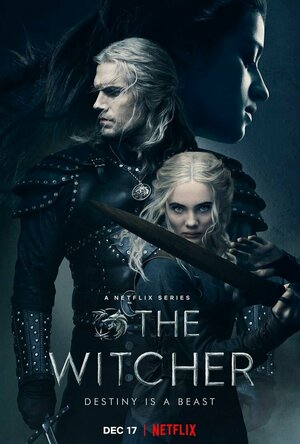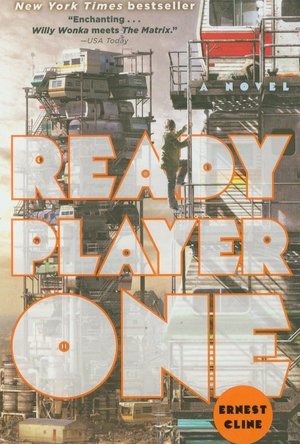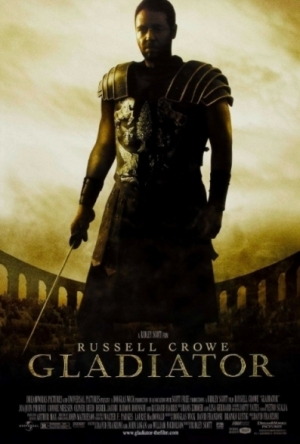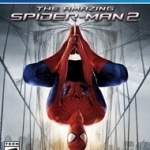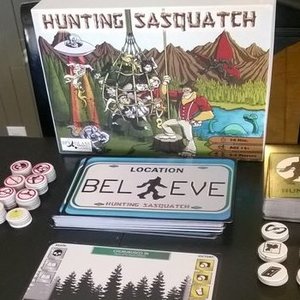Search
Search results
Peter Shephard (2822 KP) rated Cards Against Humanity in Tabletop Games
May 29, 2020
Wonderfully wicked
Depending on the audience, this game will make or break the evening. Among most friends, and even family, it will be brilliantly horrible fun; sometimes, some of the cards need to be removed for certain situations - we've had to censor one game for a specific subject matter for a specific family member. This doesnt detract from the game, just needs a little forethought.
The game itself is both simple and brilliant, but pay attention to the age restrictions!! I cant imagine many 15 or 16 year olds playing this with family members!! (Although it would probably be hilarious with friends)
This is one of the games we regularly play when we are at friends houses, and often with a drink or two. Very good, and very wrong, fun!
The game itself is both simple and brilliant, but pay attention to the age restrictions!! I cant imagine many 15 or 16 year olds playing this with family members!! (Although it would probably be hilarious with friends)
This is one of the games we regularly play when we are at friends houses, and often with a drink or two. Very good, and very wrong, fun!
BeardyJim (611 KP) rated the PlayStation 4 version of Hellblade: Senua's Sacrifice in Video Games
Nov 2, 2021 (Updated Nov 2, 2021)
Looks amazing (4 more)
Compelling story
Original death mechanic
Gives a psychological insight into how you played the game at the end
Loading screens completely hidden by cutscenes
A stunning insight into your own psyche
One of my favourite games of recent years, Senua's Sacrifice is a thought provoking insight into your own psyche, while at the same time being a beautiful story about love, death and loss.
The game looks amazing, and there aren't any loading screens, as they're cleverly hidden by cutscenes.
The game has an interesting death mechanic, whereby if Senua dies, an infection gets worse in her arm, spreading all over her body. If you die so often that the infection takes over, your save game is deleted. Harsh, right?
Despite this, the gameplay is beautifully done, and the story really gets your attention throughout.
If you haven't picked this up yet, I urge you to do so, before the sequel comes out.
The game looks amazing, and there aren't any loading screens, as they're cleverly hidden by cutscenes.
The game has an interesting death mechanic, whereby if Senua dies, an infection gets worse in her arm, spreading all over her body. If you die so often that the infection takes over, your save game is deleted. Harsh, right?
Despite this, the gameplay is beautifully done, and the story really gets your attention throughout.
If you haven't picked this up yet, I urge you to do so, before the sequel comes out.
Blazing Minds (92 KP) rated The Way Back (2020) in Movies
Oct 29, 2021 (Updated Nov 3, 2021)
Jack Cunningham (Ben Affleck) was a High School basketball phenom who walked away from the game, forfeiting his future. Years later, when he reluctantly accepts a coaching job at his alma mater, he may get one last shot at redemption.
First of all I have to say that the thought of a film based around basketball wasn’t something that appealed to me on first hearing about Finding The Way Back, but I have to say that I was pleasantly surprised by the film and how powerful not only the performances were but the story and feel of the film.
This is a movie that is one that you can sit back with and take in the story and how Affleck’s character’s life took a turn after his Basketball career ended, but he has the chance to come back when he is asked to coach the school team which hasn’t won any games in such a long time.
First of all I have to say that the thought of a film based around basketball wasn’t something that appealed to me on first hearing about Finding The Way Back, but I have to say that I was pleasantly surprised by the film and how powerful not only the performances were but the story and feel of the film.
This is a movie that is one that you can sit back with and take in the story and how Affleck’s character’s life took a turn after his Basketball career ended, but he has the chance to come back when he is asked to coach the school team which hasn’t won any games in such a long time.
David McK (3562 KP) rated The Witcher - Season 2 in TV
Apr 10, 2022
Not having played any of the games (although I have read some of the earlier books) one of the key problem's with Netflix first season of 'The Witcher', I found, was the way it jumped around timelines with no real clear 'this is set in <period>' shown.
That aspect, thankfully, is almost entirely done away with in the second season which, as a result, means it is far easier to follow just what is going on!
Set in the aftermath of the Battle of Floden field, with Geralt and Ciri now reunited and with Geralt also believing Yennefer to be dead, this season also introduces more members of the group to which he belongs; that is to say, more Witchers.
I found the season overall to be a bit hit and miss: when the episodes were good, they were very good, but when they were bad ... they were bad.
None the less, still interestied to see where this goes!
That aspect, thankfully, is almost entirely done away with in the second season which, as a result, means it is far easier to follow just what is going on!
Set in the aftermath of the Battle of Floden field, with Geralt and Ciri now reunited and with Geralt also believing Yennefer to be dead, this season also introduces more members of the group to which he belongs; that is to say, more Witchers.
I found the season overall to be a bit hit and miss: when the episodes were good, they were very good, but when they were bad ... they were bad.
None the less, still interestied to see where this goes!
Lee KM Pallatina (951 KP) rated Playing with Fire (2019) in Movies
Apr 27, 2022
Surprisingly entertaining
Originally I decided to avoid this because I'm becoming annoyed with bog standard movies starring John Cena.... But as Netflix is becoming awkwardly limited in range...
This brilliant little gem was wonderfully entertaining, with its nice little story about family and friends as well as taking care of business haha.
Following a struggling crew of Smoke Jumpers (not to be confused with fire fighters lol) with by the book, no fun and games leader Duke (John cena) edging for a promotion to head firefighter who after rescuing 3 children from a house fire ends up babysitting the trio whilst waiting for their "out of town" parents to collect them creating nothing but chaos for the crew as they struggle to understand what is happening and how they will survive.
The casting was odd yet on point, the story and plot were wonderfully written and John cena can be entertaining.
A genuinely fun family film that will have you laughing unexpectedly.
This brilliant little gem was wonderfully entertaining, with its nice little story about family and friends as well as taking care of business haha.
Following a struggling crew of Smoke Jumpers (not to be confused with fire fighters lol) with by the book, no fun and games leader Duke (John cena) edging for a promotion to head firefighter who after rescuing 3 children from a house fire ends up babysitting the trio whilst waiting for their "out of town" parents to collect them creating nothing but chaos for the crew as they struggle to understand what is happening and how they will survive.
The casting was odd yet on point, the story and plot were wonderfully written and John cena can be entertaining.
A genuinely fun family film that will have you laughing unexpectedly.
Dr Dystopian (526 KP) rated Stonemountain64 in YouTube Channels
Jan 30, 2022
Quality content (4 more)
Great community
Highly engaging
Skilled gameplay
Daily content
Livestreamer from his mums basement!
Having watched Stonemountain64 for many years now I have watched him grow from a YouTube only content creator to a Livestreamer alongside YouTube and various other social media platforms.
He led the charge as the first known serious streamer to move his Live stream content to Facebook gaming and has continued to grow year on year with live viewership growing from a few hundred each stream to routinely over 10k now.
With the team surrounding him and 6 days of live streams he is able to put put quality content regularly on his YouTube channel for those that miss live streams, want to watch the funny clips, catch ups or general gameplay.
His community is, by and large positive and friendly as is the man himself.
A top quality content creator that is well worth a watch.
He led the charge as the first known serious streamer to move his Live stream content to Facebook gaming and has continued to grow year on year with live viewership growing from a few hundred each stream to routinely over 10k now.
With the team surrounding him and 6 days of live streams he is able to put put quality content regularly on his YouTube channel for those that miss live streams, want to watch the funny clips, catch ups or general gameplay.
His community is, by and large positive and friendly as is the man himself.
A top quality content creator that is well worth a watch.
Amy Norman (1048 KP) rated Ready Player One in Books
Jul 23, 2022
The book drew me in quickly, and I would say is a huge must for any gamer, or child that grew up in the 80s.
It's a real nostalgia trip, with so many references throughout, that there will be something for everyone.
However, I had seen the film a few years ago, and I feel like this allowed me to get drawn into the world faster, as I already had a feel for it, so some of the gaps were already filled in for me.
The main draw for this book was watching the main characters pure enjoyment of the puzzles, and the real time peril of the chase and competition. It gave a real sense of what video games are truly about - escapism.
There is a lot I could say about this book, as it touched on a great deal of real world issues, and couldn't be more relevant to now.
Overall, there are a lot more pros than cons, and I'd highly recommend!
It's a real nostalgia trip, with so many references throughout, that there will be something for everyone.
However, I had seen the film a few years ago, and I feel like this allowed me to get drawn into the world faster, as I already had a feel for it, so some of the gaps were already filled in for me.
The main draw for this book was watching the main characters pure enjoyment of the puzzles, and the real time peril of the chase and competition. It gave a real sense of what video games are truly about - escapism.
There is a lot I could say about this book, as it touched on a great deal of real world issues, and couldn't be more relevant to now.
Overall, there are a lot more pros than cons, and I'd highly recommend!
David McK (3562 KP) rated Gladiator (2000) in Movies
Nov 20, 2024
Are you not entertained?
"The General who became a slave.
The slave who became an Gladiator.
The Gladiator who defied an Emperor.
A gripping tale, is it not ..."
So says Joaquin Phoenix's Emperor Commodus towards the end of this movie, talking to his erstwhile friend Maximus (Russel Crowe), after seizing power in the early parts of the film and believing the General to be dead in Germania (as per his command) and after also killing Maximus's wife and son.
The plot, then, basically, is a straight A to B revenge.
This, I believe, is also the film that launched Russel Crowe and Phoenix both to stardom - I struggle, personally, to think of any other since where either have been as electric as they are in this movie.
It may also help that they have a stacked supporting cast, including the likes of Oliver Reed (in his last onscreen role), Connie Nielsen, Richard Harris, Derek Jacobi and Djimon Hounsou and some spectacular action scenes of the Roman games ...
The slave who became an Gladiator.
The Gladiator who defied an Emperor.
A gripping tale, is it not ..."
So says Joaquin Phoenix's Emperor Commodus towards the end of this movie, talking to his erstwhile friend Maximus (Russel Crowe), after seizing power in the early parts of the film and believing the General to be dead in Germania (as per his command) and after also killing Maximus's wife and son.
The plot, then, basically, is a straight A to B revenge.
This, I believe, is also the film that launched Russel Crowe and Phoenix both to stardom - I struggle, personally, to think of any other since where either have been as electric as they are in this movie.
It may also help that they have a stacked supporting cast, including the likes of Oliver Reed (in his last onscreen role), Connie Nielsen, Richard Harris, Derek Jacobi and Djimon Hounsou and some spectacular action scenes of the Roman games ...
Daniel Boyd (1066 KP) rated The Amazing Spider-Man 2 in Video Games
Jul 21, 2017
Poor Graphics (3 more)
Awkward Animation
Glitches Galore
Rushed Ending
Can He Swing From A Web? Yeah, But That’s About All He Can Do…
You may be thinking Dan, why the hell are you reviewing a low rated movie tie in game that came out three years ago? Well, I would say, that is a very valid question. I am reviewing this game because I actually believe it is one of the most relevant games I’ve played so far this year in terms of the wider gaming landscape, so yeah you have me rumbled, this won’t be so much a review of The Amazing Spiderman 2 for PS4 as it will be a commentary on bad games in general and their place in the modern gaming landscape.
I had just come off of finally getting around to playing Until Dawn at the start of January. A well made, well written, well acted, well executed teen horror story that had atmosphere and intrigue in spades. I then went on to play a game that I thought was mediocre by comparison, DMC Definitive Edition. When playing through the story I was so underwhelmed and disappointed in what they had turned this once great franchise into, an angsty, melodramatic, arcade slash ‘em up with as much depth as the shallow end of the kiddies swimming pool. I thought what a waste of cash and time. What a piece of garbage. Oh how naive I was, I had no idea how much worse it could get. After beating DMC and the attached story DLC that came with the Definitive Edition, I popped out the game and slid in The Amazing Spiderman 2. The first thing that I noticed was that the game graphically is at the same level if not worse than the first Amazing Spiderman game on PS3, but I thought hey, games with under par graphics can still be fun, UI’s and poly counts aren’t everything so I began working my way through the main story. Let’s start with the only positive that this game has going for it, the web slinging. Traversal feels and looks great in the game, zipping around NYC is a treat and when everything works correctly, you can pull off some truly spectacular acrobatics while shooting around in mid air. The shoulder buttons on the controller are matched to Spidey’s arms, left trigger for left swing, right trigger for right swing, and unlike the last game, in this one the web shooters have to be aimed at a building in order to perform a successful swing. The important phrase here, is ‘when it works.’ There were several times when I would be right next to a building and press the trigger to swing, only to hear Spidey say, ‘Hey, this just in, web slingers need something to stick to.’ No shit Spidey, that’s why I’m pressing the trigger on the side where the huge fucking skyscraper is. Also, there would be times when I had a decent amount of momentum going, swing left, right, left, right consecutively and as I pressed the left trigger again to attach to the building on my left, for some odd reason, Spidey would fire his right hand web shooter, attaching to a distant building on the right, turning me away from the direction I was swinging and totally ruining my momentum, this was particularly frustrating during boss fights and chase sequences or when swinging against the clock. Overall though traversal is fun, okay now that the positive is out of the way, let’s rip this thing apart. Animations are stiff, glitches are common and every cutscene in the game ends abruptly with an awkward animation that resembles the look of a news anchor when they run out of words to read off the teleprompter, but the camera is still rolling. Why they decided to add a dialogue system, I have no idea, it is so unnecessary and out of place and has absolutely no effect on the outcome of the game’s narrative, it’s simply there for the sake of having a dialogue option. The plot is fairly standard, but is bearable for the first two thirds of the game, however the point that the publishers told the development team to get a move on and meet the deadline to coincide with the release of the movie becomes instantly clear. The last 5 or so chapters in the game are so rushed it’s like going through a checklist. The first bossfight in the last third of the game is pretty mundane, but at least there is an attempt at a build up to it. However after that fight you are teleported to the top of a skyscraper to battle Electro in a boss fight with the least build up ever. So you do that and then you are corrected, this next boss fight with the Green Goblin is the least build up to a boss fight ever. You don’t see the transformation of either Electro or the Goblin and honestly, if I hadn’t seen the movie that goes with this game, I would not have had a clue about what was going on. Then it’s as if the game remembers that they made a half arsed attempt at introducing Carnage away back at the beginning of the story and so they throw in another out of the blue boss fight to end the game. Wow, this lack of story build up and context wouldn’t have been acceptable in a PS1 game, it certainly isn’t acceptable here. Also the game again (just like the first one,) tries to copy the Arkham games in terms of the stealth and combat systems and miserably fails.
In my opinion, games like this; lazy, half arsed cash grabs, just aren’t acceptable in today’s modern landscape of video games. I thought DMC was a slog, but after playing this piece of dogshit, DMC is game of the year material. So please, please stop. Until you have a dedicated team who genuinely want to make a good game for fans of a franchise, don’t bother. Signed by everyone.
I had just come off of finally getting around to playing Until Dawn at the start of January. A well made, well written, well acted, well executed teen horror story that had atmosphere and intrigue in spades. I then went on to play a game that I thought was mediocre by comparison, DMC Definitive Edition. When playing through the story I was so underwhelmed and disappointed in what they had turned this once great franchise into, an angsty, melodramatic, arcade slash ‘em up with as much depth as the shallow end of the kiddies swimming pool. I thought what a waste of cash and time. What a piece of garbage. Oh how naive I was, I had no idea how much worse it could get. After beating DMC and the attached story DLC that came with the Definitive Edition, I popped out the game and slid in The Amazing Spiderman 2. The first thing that I noticed was that the game graphically is at the same level if not worse than the first Amazing Spiderman game on PS3, but I thought hey, games with under par graphics can still be fun, UI’s and poly counts aren’t everything so I began working my way through the main story. Let’s start with the only positive that this game has going for it, the web slinging. Traversal feels and looks great in the game, zipping around NYC is a treat and when everything works correctly, you can pull off some truly spectacular acrobatics while shooting around in mid air. The shoulder buttons on the controller are matched to Spidey’s arms, left trigger for left swing, right trigger for right swing, and unlike the last game, in this one the web shooters have to be aimed at a building in order to perform a successful swing. The important phrase here, is ‘when it works.’ There were several times when I would be right next to a building and press the trigger to swing, only to hear Spidey say, ‘Hey, this just in, web slingers need something to stick to.’ No shit Spidey, that’s why I’m pressing the trigger on the side where the huge fucking skyscraper is. Also, there would be times when I had a decent amount of momentum going, swing left, right, left, right consecutively and as I pressed the left trigger again to attach to the building on my left, for some odd reason, Spidey would fire his right hand web shooter, attaching to a distant building on the right, turning me away from the direction I was swinging and totally ruining my momentum, this was particularly frustrating during boss fights and chase sequences or when swinging against the clock. Overall though traversal is fun, okay now that the positive is out of the way, let’s rip this thing apart. Animations are stiff, glitches are common and every cutscene in the game ends abruptly with an awkward animation that resembles the look of a news anchor when they run out of words to read off the teleprompter, but the camera is still rolling. Why they decided to add a dialogue system, I have no idea, it is so unnecessary and out of place and has absolutely no effect on the outcome of the game’s narrative, it’s simply there for the sake of having a dialogue option. The plot is fairly standard, but is bearable for the first two thirds of the game, however the point that the publishers told the development team to get a move on and meet the deadline to coincide with the release of the movie becomes instantly clear. The last 5 or so chapters in the game are so rushed it’s like going through a checklist. The first bossfight in the last third of the game is pretty mundane, but at least there is an attempt at a build up to it. However after that fight you are teleported to the top of a skyscraper to battle Electro in a boss fight with the least build up ever. So you do that and then you are corrected, this next boss fight with the Green Goblin is the least build up to a boss fight ever. You don’t see the transformation of either Electro or the Goblin and honestly, if I hadn’t seen the movie that goes with this game, I would not have had a clue about what was going on. Then it’s as if the game remembers that they made a half arsed attempt at introducing Carnage away back at the beginning of the story and so they throw in another out of the blue boss fight to end the game. Wow, this lack of story build up and context wouldn’t have been acceptable in a PS1 game, it certainly isn’t acceptable here. Also the game again (just like the first one,) tries to copy the Arkham games in terms of the stealth and combat systems and miserably fails.
In my opinion, games like this; lazy, half arsed cash grabs, just aren’t acceptable in today’s modern landscape of video games. I thought DMC was a slog, but after playing this piece of dogshit, DMC is game of the year material. So please, please stop. Until you have a dedicated team who genuinely want to make a good game for fans of a franchise, don’t bother. Signed by everyone.
Purple Phoenix Games (2266 KP) rated Hunting Sasquatch in Tabletop Games
Jan 30, 2021
Sasquatch. Nessie. La Chupacabra. The Jersey Devil. These are all examples of what is called “Cryptids.” These cryptids are mostly fairytale creatures, and have not been substantiated yet, but many a fool have hunted them nonetheless. You are one of those fools. Your target? Information on Sasquatch. Yeah, you might find other clues to fellow cryptids along the way, but you really need that sweet sweet clear photo to be crowned King Fool!
Hunting Sasquatch is a competitive press-your-luck card and dice game where players are attempting to gather clues to catch Sasquatch. The winner will be the player with the most Victory Points at the end of the game, if any VP are to be had before too many Hunters go missing in the woods.
DISCLAIMER: We were provided a prototype copy of this game for the purposes of this review. These are preview copy components, and I do not know for sure if the final components will be any different from these shown. Also, it is not my intention to detail every rule in the game, as there are just too many. You are invited to download the rulebook, back the game through the Kickstarter campaign, or through any retailers stocking it after fulfillment. -T
To setup shuffle the Location cards (big ones) and reveal as many locations as are players. Shuffle the Hunter cards and deal three to each player. Shuffle the Hunter’s Arsenal cards and place its deck near the Hunter deck on the table. Separate the various tokens by type and place them on the table nearby as well. Have the dice accessible to all players and the game may begin!
On a turn the active player will choose one of their Hunters to visit a Location. The Hunter may visit one of the face-up Locations or draw one to be placed on top of one of those revealed. If the Hunter draws a new Location they MUST visit this newly-revealed Location.
The Hunter then rolls all eight of the green Hunter Dice. If the Hunter had gained any Anti- tokens (anti-camera, anti-book, etc) then those Anti- tokens cause matching dice to be removed from the turn immediately. The Hunter may now spend any Wildcard Tokens they may have earned previously to rotate a die’s value to anything wished.
Once the roll is ready to be resolved, the Hunter will reference the Location they chose for dice values. Each Location has Lost Conditions on the left and Victory Conditions on the right of the card. The Hunter must fill as many Lost Conditions as they have matching dice, and may then assign Victory Conditions dice to their places on the card. Should a Hunter fill up the Lost Conditions spaces with dice the Hunter is then lost to the hunt and their Hunter Card is discarded. Should the Hunter avoiding becoming lost and fill up the column of Victory Conditions they will score the booty from the box in the lower right-hand corner of the Location card (mostly VP, Evidence Tokens, Wildcard Tokens).
If neither column of icons on the Location Card have been filled completely and there are still dice available, the black Fate Die may be rolled. A successful Fate Die roll shows a lucky horseshoe and allows the Hunter to re-roll the available dice. An unsuccessful Fate Die roll shows a bear trap icon and forces the Hunter to apply the Trap conditions on the lower left-hand corner of the Location Card (usually Anti- tokens).
The game ends once a certain number of Hunters are lost (depending on number of players) or once any Hunter has collected all five Evidence Tokens.
Components. Again, this is a prototype copy of the game, so components will most likely be different as a result of a successful Kickstarter campaign. That said, I can comment on the direction the game is going, and I like it quite a bit. The tokens will need to be improved to be more usable, and obviously the dice will upgraded, but other than those I like everything else going on here. The cards are nice, easy to read, and have great artwork on them. Similarly the Location Cards are probably my favorite components of the game because they feature hilarious and wonderful artwork. The game looks great as is, but I am eagerly looking forward to what it will be once completely finished.
The gameplay is kind of a crapshoot in my experience. I have had several plays where too many Hunters were lost too quickly and the game ended in five minutes. I have also played games where Lady Luck was on my side and I was rolling like a king. I managed to get three Evidence Tokens that time. Each one of my games have ended in surpassing the total number of Hunters lost, but I feel like the game is winnable. Just probably by someone luckier than me.
I do really love dice games, and when they allow players to alter the face values, or the game alters them I find a great deal of satisfaction. And that is what Hunting Sasquatch delivers. It is a dice chucking game with dice alteration, amazing hilarious art, and a pretty tough difficulty level. It is perfect for gamers who enjoy dice games but find most to be too lame and easy.
I love this theme. I love this art style. I love the gameplay. I do not love the tiny and thin tokens (but I pray they get a huge upgrade for the final version). Hunting Sasquatch is another winner from Spyglass Games, who brought us the incredible VENOM Assault. I am a big fan of the games this publisher is putting out there and if you are like me, I think you will also like this one a lot. I invite you to check out their Kickstarter campaign when it launches, and remember: cryptids are just made-up stories. They cannot come to your campsite and eat all your jerky.
Hunting Sasquatch is a competitive press-your-luck card and dice game where players are attempting to gather clues to catch Sasquatch. The winner will be the player with the most Victory Points at the end of the game, if any VP are to be had before too many Hunters go missing in the woods.
DISCLAIMER: We were provided a prototype copy of this game for the purposes of this review. These are preview copy components, and I do not know for sure if the final components will be any different from these shown. Also, it is not my intention to detail every rule in the game, as there are just too many. You are invited to download the rulebook, back the game through the Kickstarter campaign, or through any retailers stocking it after fulfillment. -T
To setup shuffle the Location cards (big ones) and reveal as many locations as are players. Shuffle the Hunter cards and deal three to each player. Shuffle the Hunter’s Arsenal cards and place its deck near the Hunter deck on the table. Separate the various tokens by type and place them on the table nearby as well. Have the dice accessible to all players and the game may begin!
On a turn the active player will choose one of their Hunters to visit a Location. The Hunter may visit one of the face-up Locations or draw one to be placed on top of one of those revealed. If the Hunter draws a new Location they MUST visit this newly-revealed Location.
The Hunter then rolls all eight of the green Hunter Dice. If the Hunter had gained any Anti- tokens (anti-camera, anti-book, etc) then those Anti- tokens cause matching dice to be removed from the turn immediately. The Hunter may now spend any Wildcard Tokens they may have earned previously to rotate a die’s value to anything wished.
Once the roll is ready to be resolved, the Hunter will reference the Location they chose for dice values. Each Location has Lost Conditions on the left and Victory Conditions on the right of the card. The Hunter must fill as many Lost Conditions as they have matching dice, and may then assign Victory Conditions dice to their places on the card. Should a Hunter fill up the Lost Conditions spaces with dice the Hunter is then lost to the hunt and their Hunter Card is discarded. Should the Hunter avoiding becoming lost and fill up the column of Victory Conditions they will score the booty from the box in the lower right-hand corner of the Location card (mostly VP, Evidence Tokens, Wildcard Tokens).
If neither column of icons on the Location Card have been filled completely and there are still dice available, the black Fate Die may be rolled. A successful Fate Die roll shows a lucky horseshoe and allows the Hunter to re-roll the available dice. An unsuccessful Fate Die roll shows a bear trap icon and forces the Hunter to apply the Trap conditions on the lower left-hand corner of the Location Card (usually Anti- tokens).
The game ends once a certain number of Hunters are lost (depending on number of players) or once any Hunter has collected all five Evidence Tokens.
Components. Again, this is a prototype copy of the game, so components will most likely be different as a result of a successful Kickstarter campaign. That said, I can comment on the direction the game is going, and I like it quite a bit. The tokens will need to be improved to be more usable, and obviously the dice will upgraded, but other than those I like everything else going on here. The cards are nice, easy to read, and have great artwork on them. Similarly the Location Cards are probably my favorite components of the game because they feature hilarious and wonderful artwork. The game looks great as is, but I am eagerly looking forward to what it will be once completely finished.
The gameplay is kind of a crapshoot in my experience. I have had several plays where too many Hunters were lost too quickly and the game ended in five minutes. I have also played games where Lady Luck was on my side and I was rolling like a king. I managed to get three Evidence Tokens that time. Each one of my games have ended in surpassing the total number of Hunters lost, but I feel like the game is winnable. Just probably by someone luckier than me.
I do really love dice games, and when they allow players to alter the face values, or the game alters them I find a great deal of satisfaction. And that is what Hunting Sasquatch delivers. It is a dice chucking game with dice alteration, amazing hilarious art, and a pretty tough difficulty level. It is perfect for gamers who enjoy dice games but find most to be too lame and easy.
I love this theme. I love this art style. I love the gameplay. I do not love the tiny and thin tokens (but I pray they get a huge upgrade for the final version). Hunting Sasquatch is another winner from Spyglass Games, who brought us the incredible VENOM Assault. I am a big fan of the games this publisher is putting out there and if you are like me, I think you will also like this one a lot. I invite you to check out their Kickstarter campaign when it launches, and remember: cryptids are just made-up stories. They cannot come to your campsite and eat all your jerky.
